Life in Kolomyya, story 4
Tour by Jeff Austin, July-August 2019.
On July 26, 2019 we boarded Ukrainian International flight 232 for the nearly 9-hour flight to Kyiv where we would connect to the 1-hour flight to Ivano Frankivsk, followed by a 45-minute car ride to Kolomyia. There was no way to know what was in store for us over the next 3 days. I had arranged for a tour of 6 cities in 3 days – we would land in Ivano Frankivsk and, after a short lunch, would drive to Kolomyia for a 3-hour tour there and then stay overnight. The next day, we would start at 9am and see Horodenka, Obertyn, Khotymyr and Ivanivtsi, coming back to Kolomyia for another overnight. The last day would take us to Ivano Frankivsk where we were meeting with Rabbi Kolesnik and then given a tour of the city. We would stay in Ivano Frankivsk overnight, so we were close to the airport for our 7 a.m. flight back to Kyiv and then to Budapest, where we were staying for a week. Sasha Kovalchuk would be our guide/driver/interpreter for the 3 days and had arrange private guides in each place.
Sasha met us at the Ivano Frankivsk Airport and drove us to a traditional Ukrainian restaurant for lunch of Varenyi's and Banosh. After a tour of the restaurant we proceeded to Kolomyia to check in at our hotel. We stayed at the Hotel Pysanka, which is 3 blocks north of the Rynek (town square). We had a nice view of the Pysanka (meaning "Decorated Egg") Museum. We met our guide, Soloymia, at the hotel and then went to meet Yasha, the head of the Jewish Community in Kolomyya.
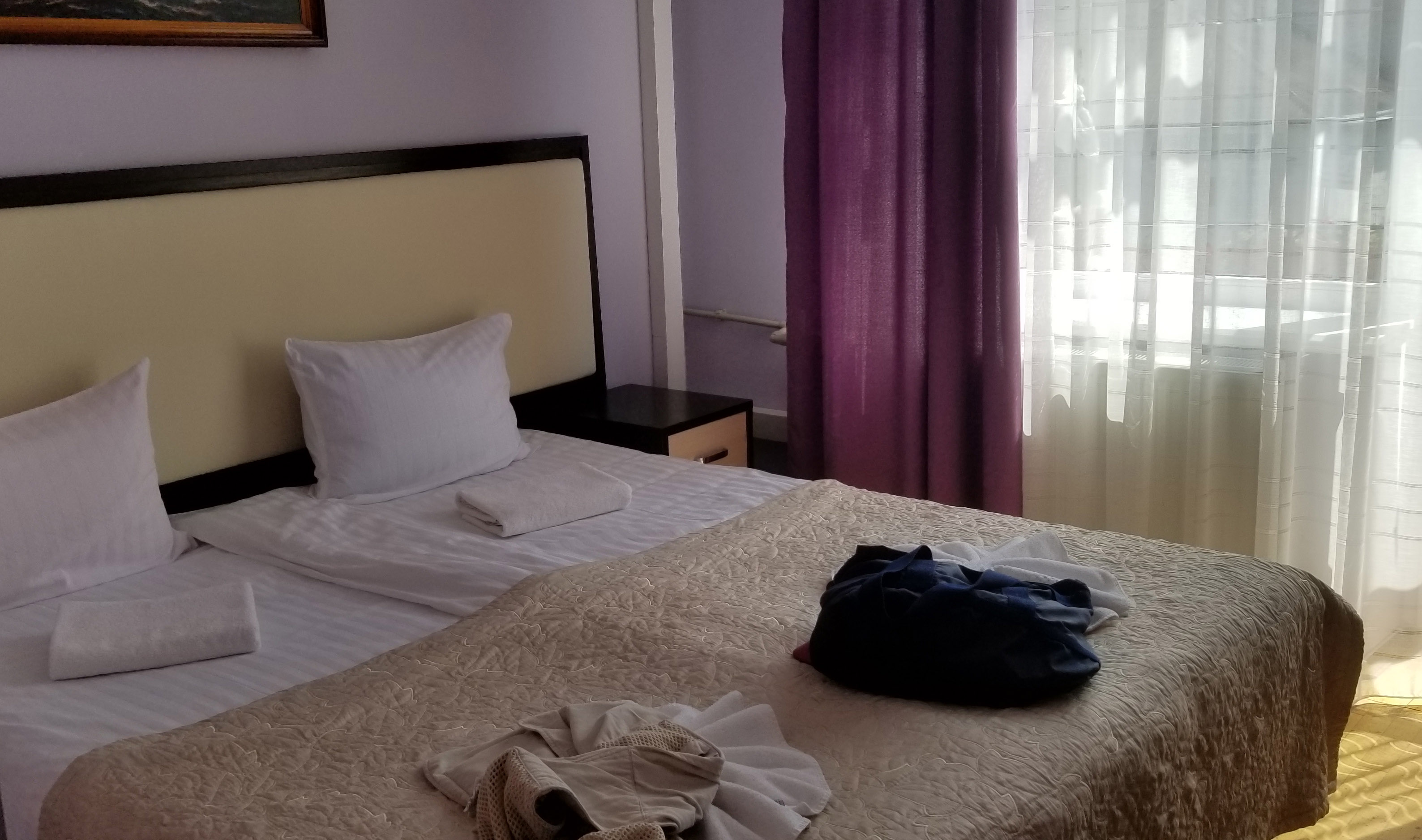 |
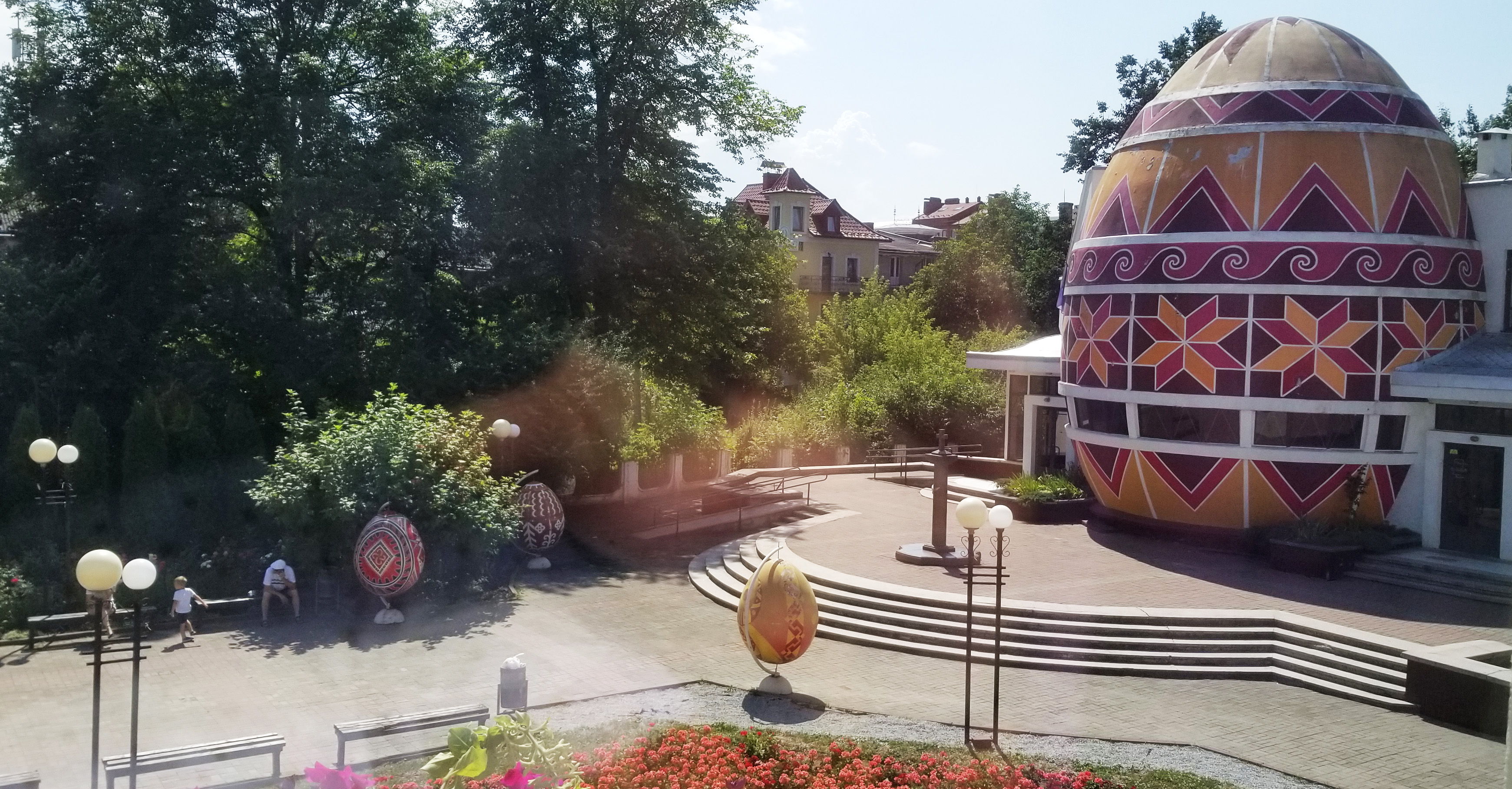 |
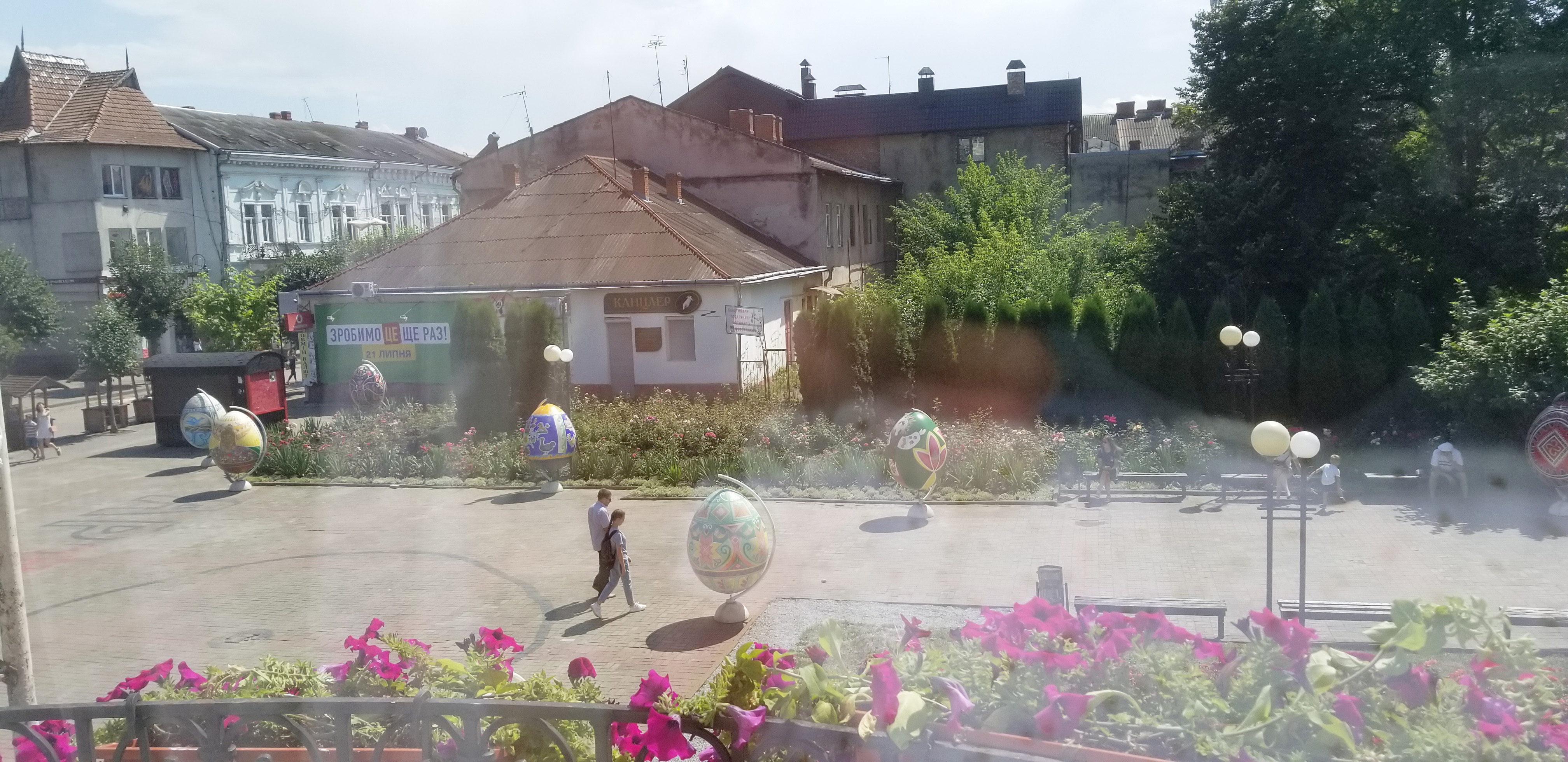 |
|
The pictures tell the story of Kolomyia. The few Jewish remnants from the pre-Soviet years, such as the Jerusalem Synagogue. The reconstruction work being done by Yasha Zalishchiker in two of the three Jewish cemeteries in order to show the Jewish history of the city. The Sheparivsti Forest monument which is one of the few reminders of the Nazi’s devastation. The former ghetto where there are no signs to tell you what happened there. The half dozen or so artifacts on display in the Museum of Kolomyia History. Current day Kolomyia with many modern buildings and where a nice dinner for two cost $26. Comparing pictures of the Rynek from mid-19th century to today. I hope this gives you a sense of the city of Kolomyia, both past and present.
Beit HaKnesset Yarushalaim – Kolomyia synagogue
Located on Vulytsva (formerly corner of Perkars’ka and Pereyaslasvska streets in 1939,) this synagogue is the only active one remaining Kolomyia. There are 81 Jews in Kolomyia and they have a full-time Rabbi. The original synagogue was built in 1630, made of “timber”. Fire destroyed it in 1858; it was rebuilt and reopened in 1870. The synagogue survived WW II, but after the war, the Soviets turned it into a warehouse for salt. Later, it was a gymnasium (school) for the local medical school. The Jewish community was able to take it over again in 1966.The current rabbi is Shmuel Weinberg from Willamsburg. When he arrived, he was officially allowed to stay only 90 days. But Yasha filed official requests with the government to extend his stay to 1 year. Shmuel is the 7th generation grandson of Rabbi Baruch Lichtenstein. Yasha gave us a tour of the small synagogue (Beit HaKneseet Yarushalyim) and its history. Baal Shem Tov prayed here with his “mates” in 1725.
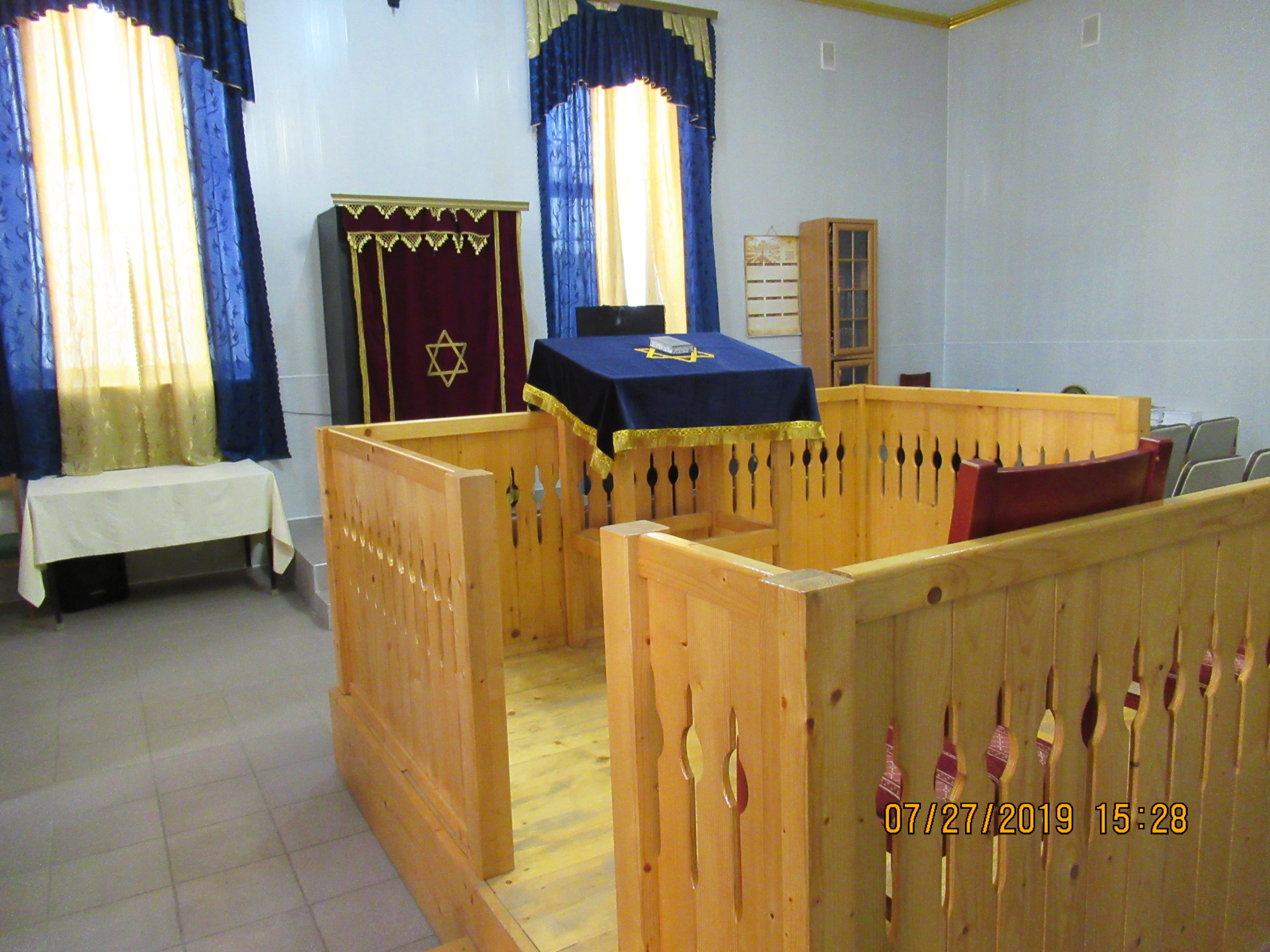 |
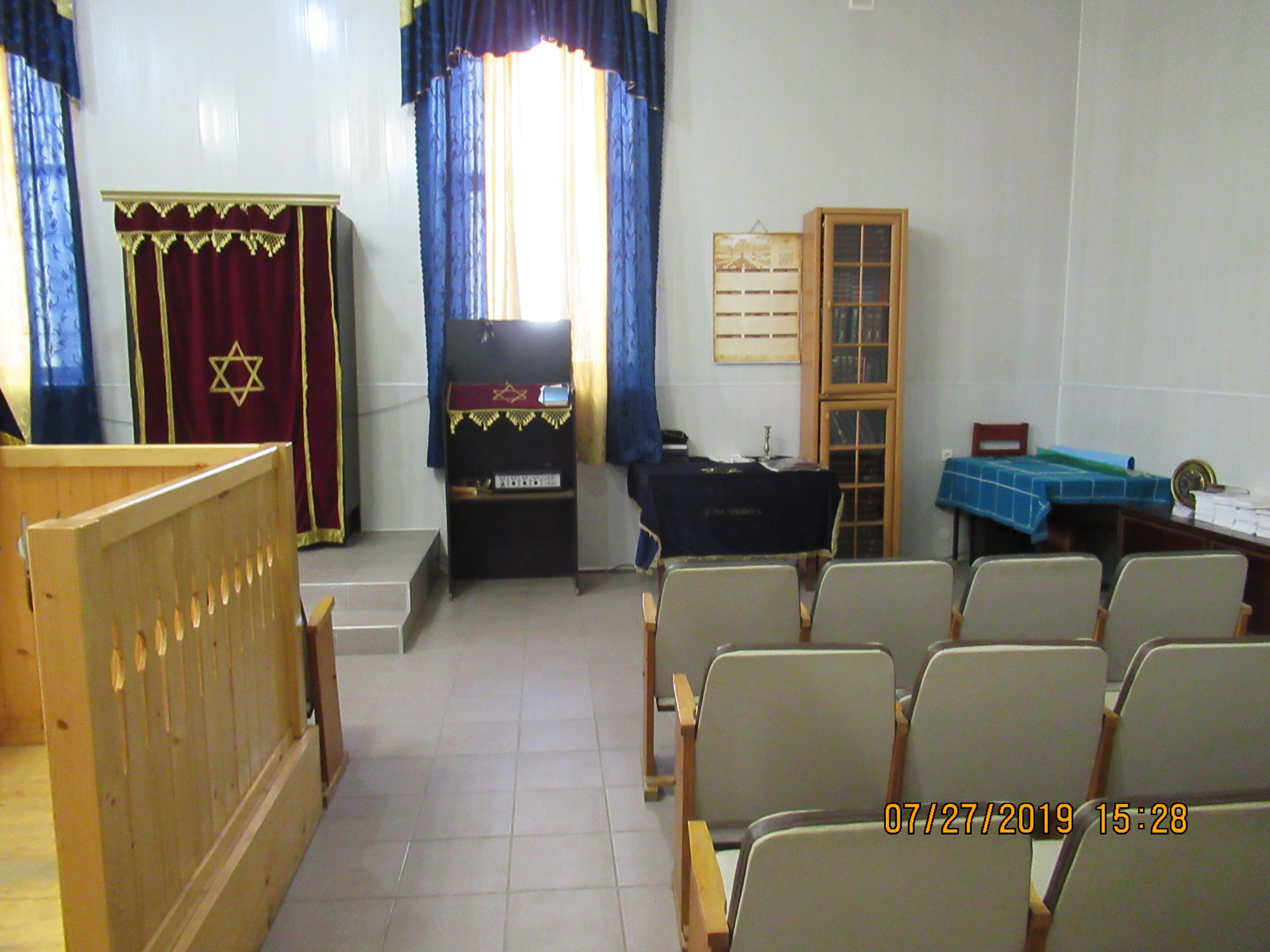 |
| Interior of synagogue | Interior of synagogue |
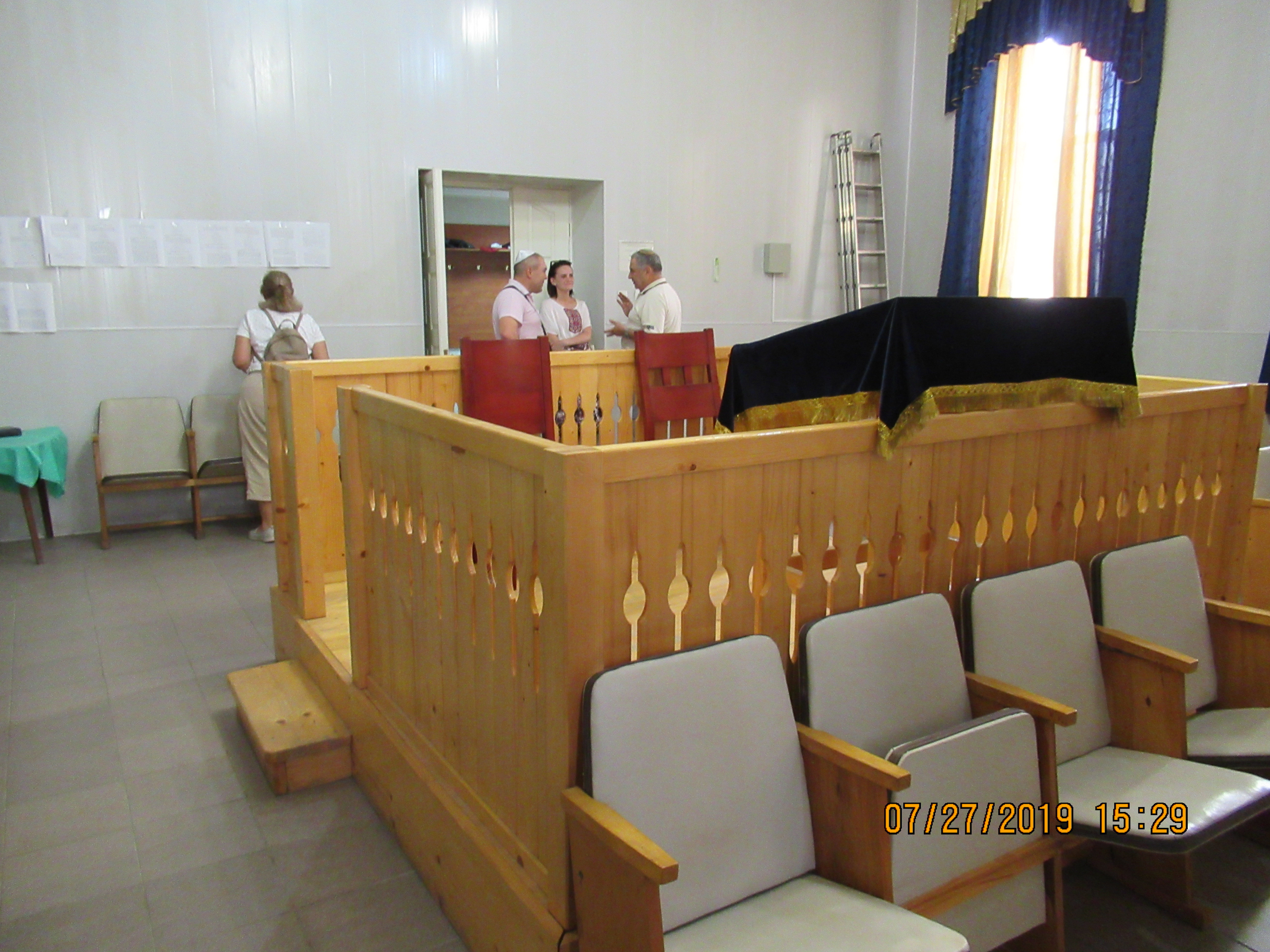 |
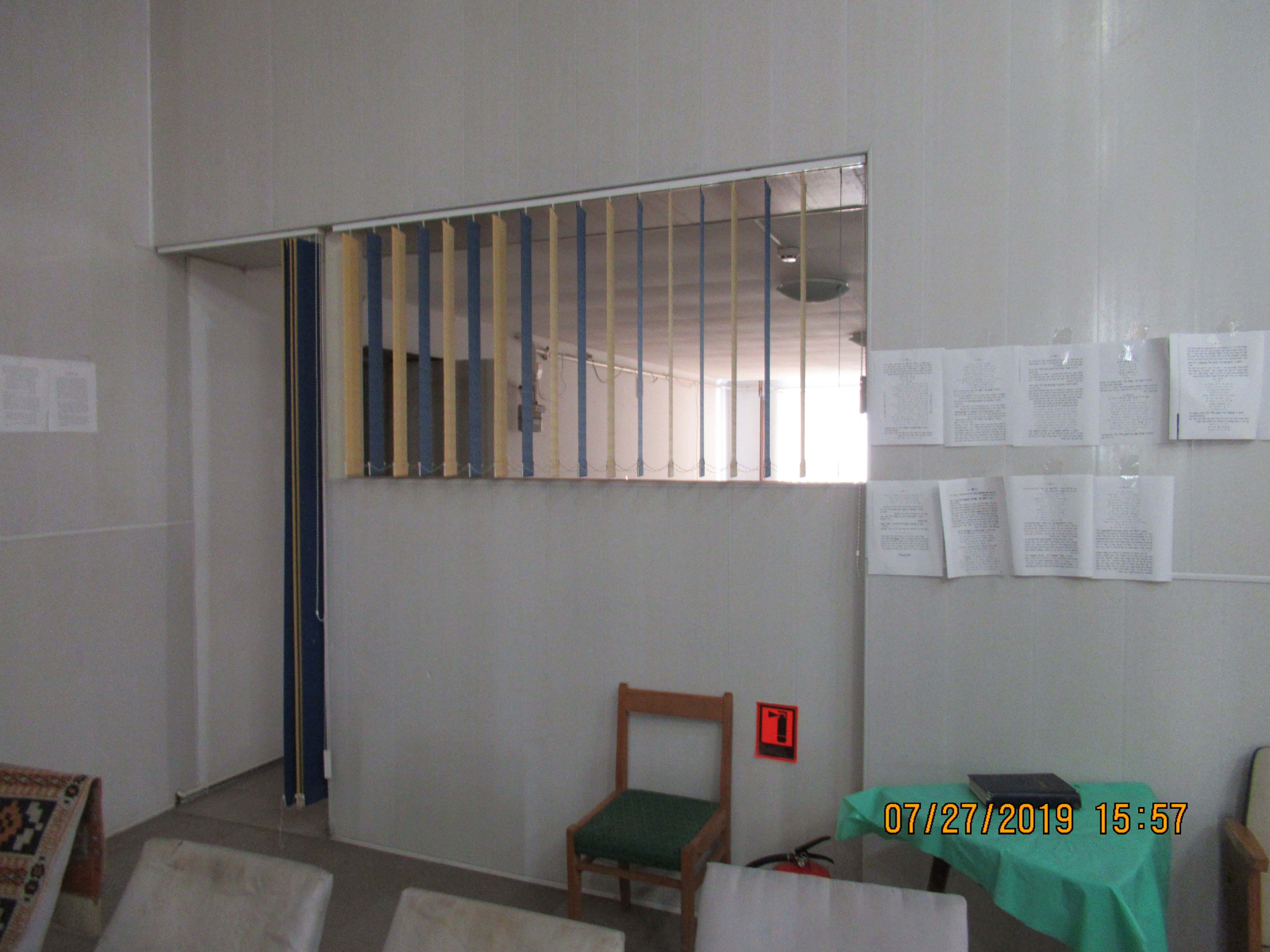 |
| Looking toward the back |
Mechitza (women's area) |
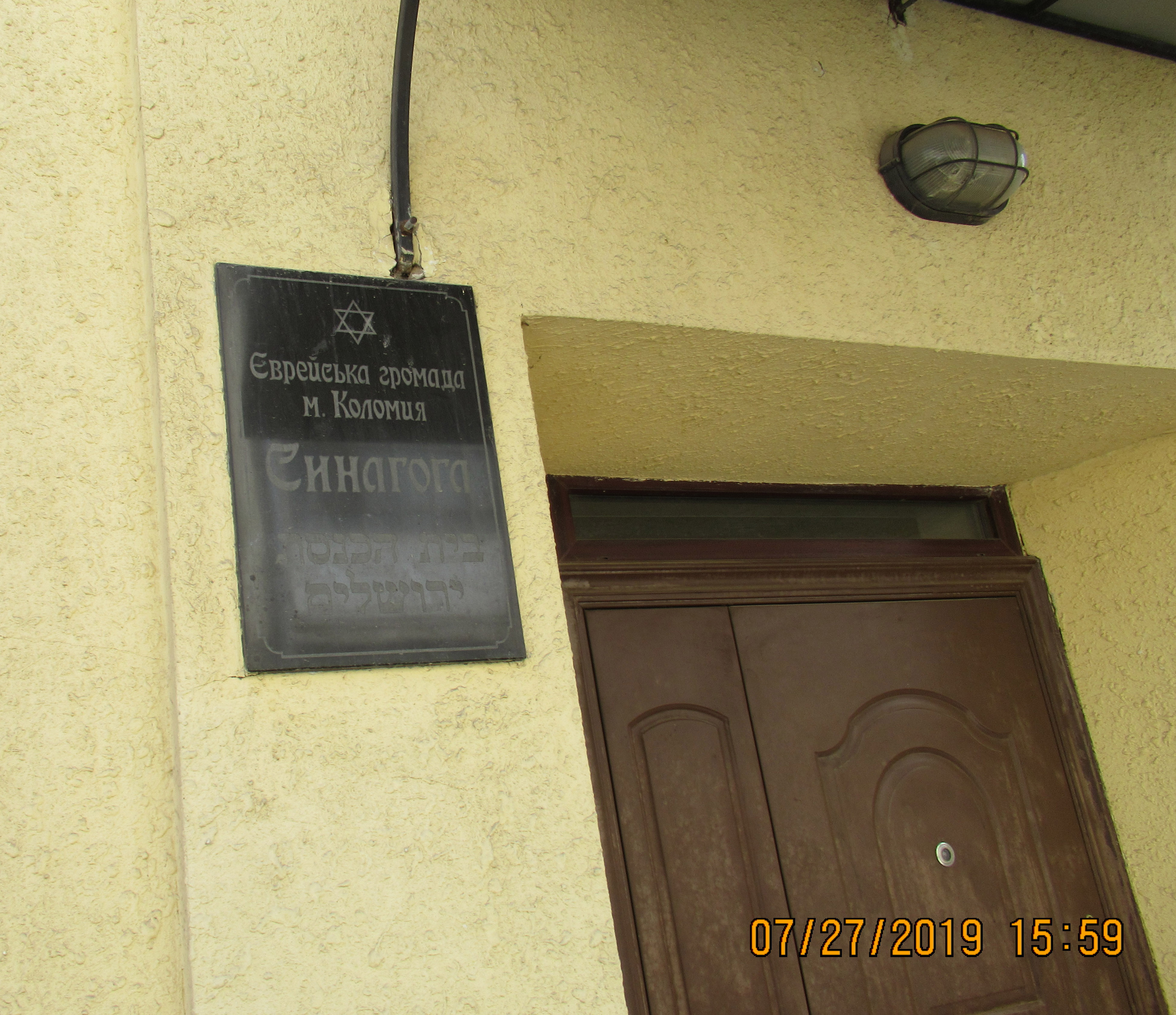 |
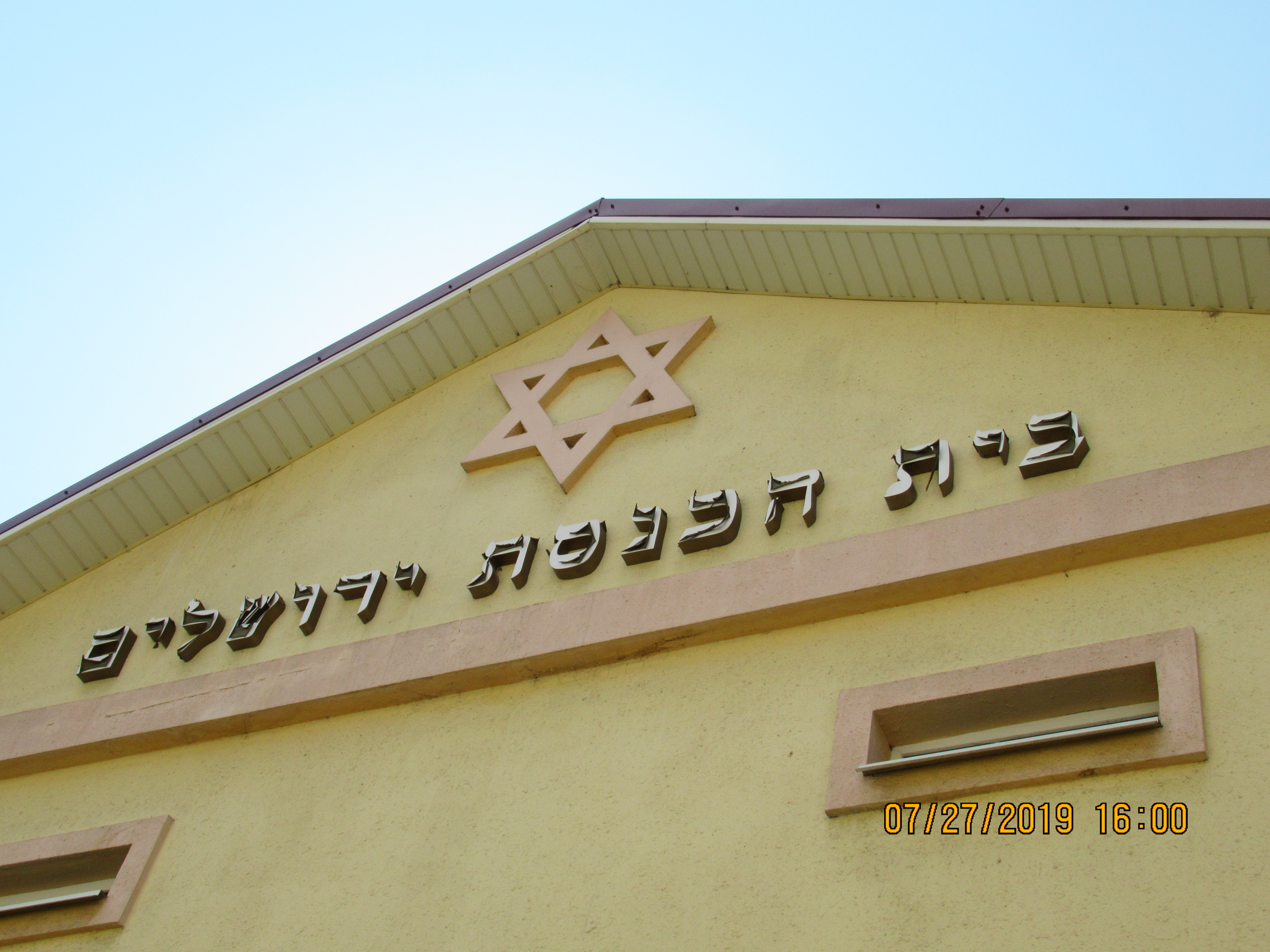 |
| Front entrance. The sign says in Ukrainian: Jewish Community of Kolomyia – Synagogue. Below in Hebrew: Beit Midrash Yarushalaim |
Sign on side of
building: Beith Haknesset Yarushalaim |
The next stop was the 1st Jewish cemetery of Kolomyia which was used until 1783 and the site of the Beit Midrash that was used by the Baal Shem Tov.They are located on Kamionka Street. It was originally known as Ozipoler Synagogue or Orenshtein Street Synagogue because of its location at 8 Jacob Orenshtein Street. The building dates to the 18th century but the cemetery goes back to 1600’s. Yasha has turned this into another one of his projects with work scheduled to begin in September 2019. He found all the drawings of how the building looked originally and is attempting to re-create it. He plans to turn into museum and a restaurant and restore the cemetery. Maybe, even, a hotel and a mikve.
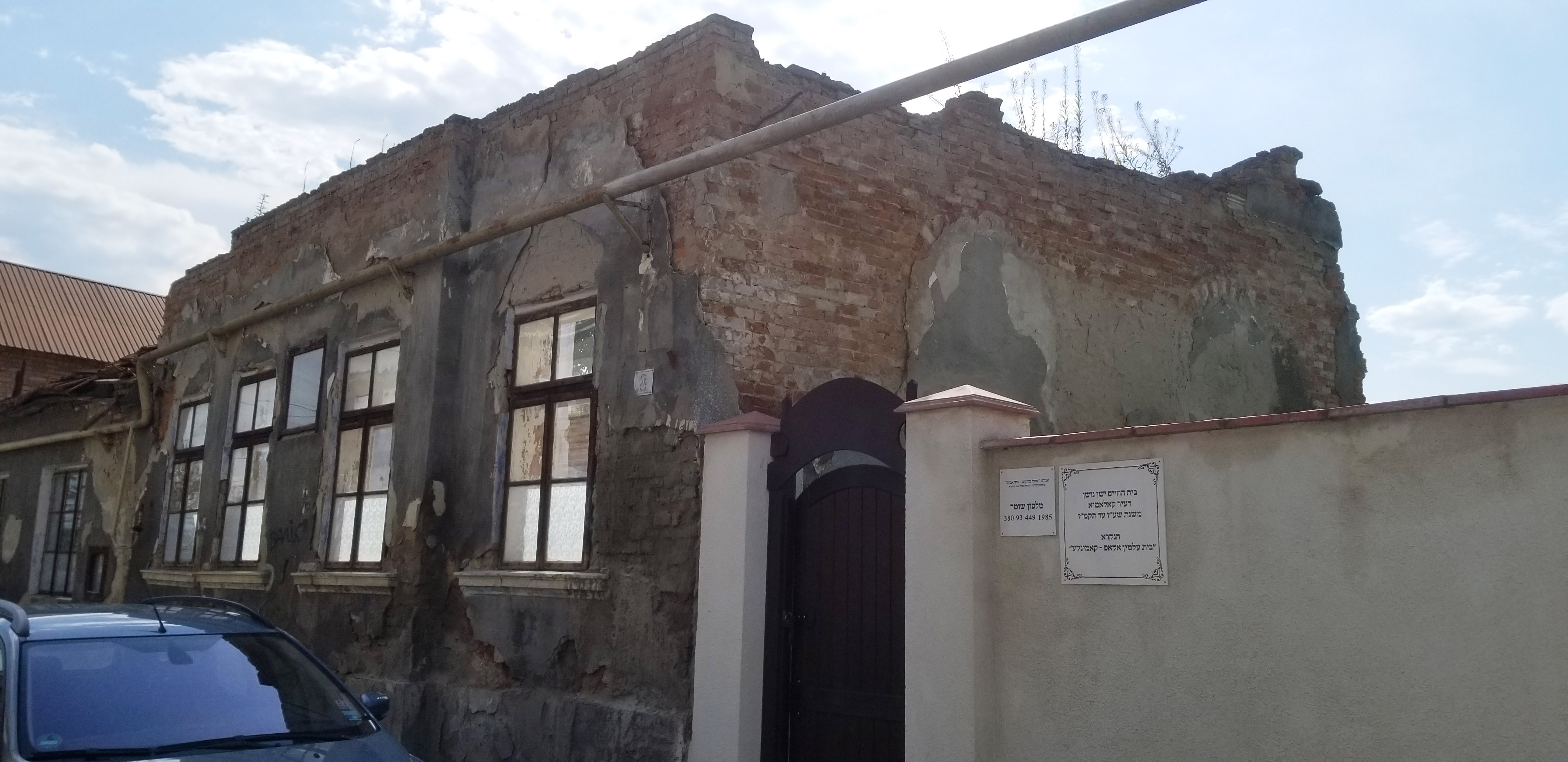 |
|
| Exterior of Beit Midrash and wooden gate to cemetery | |
| Interior of Beit
Midrash Yasha purchased the building from a local businessman. The roof and 2nd floor had been removed by the time Yasha purchased it. He saved it from further destruction. Baal Shem Tov lived on the 2nd floor. |
Beit Midrah Kaminka
(name for the street) Built in the year 1616. According to tradition, the Baal Shem Tov and his followers prayed here while he lived here in his old days. |
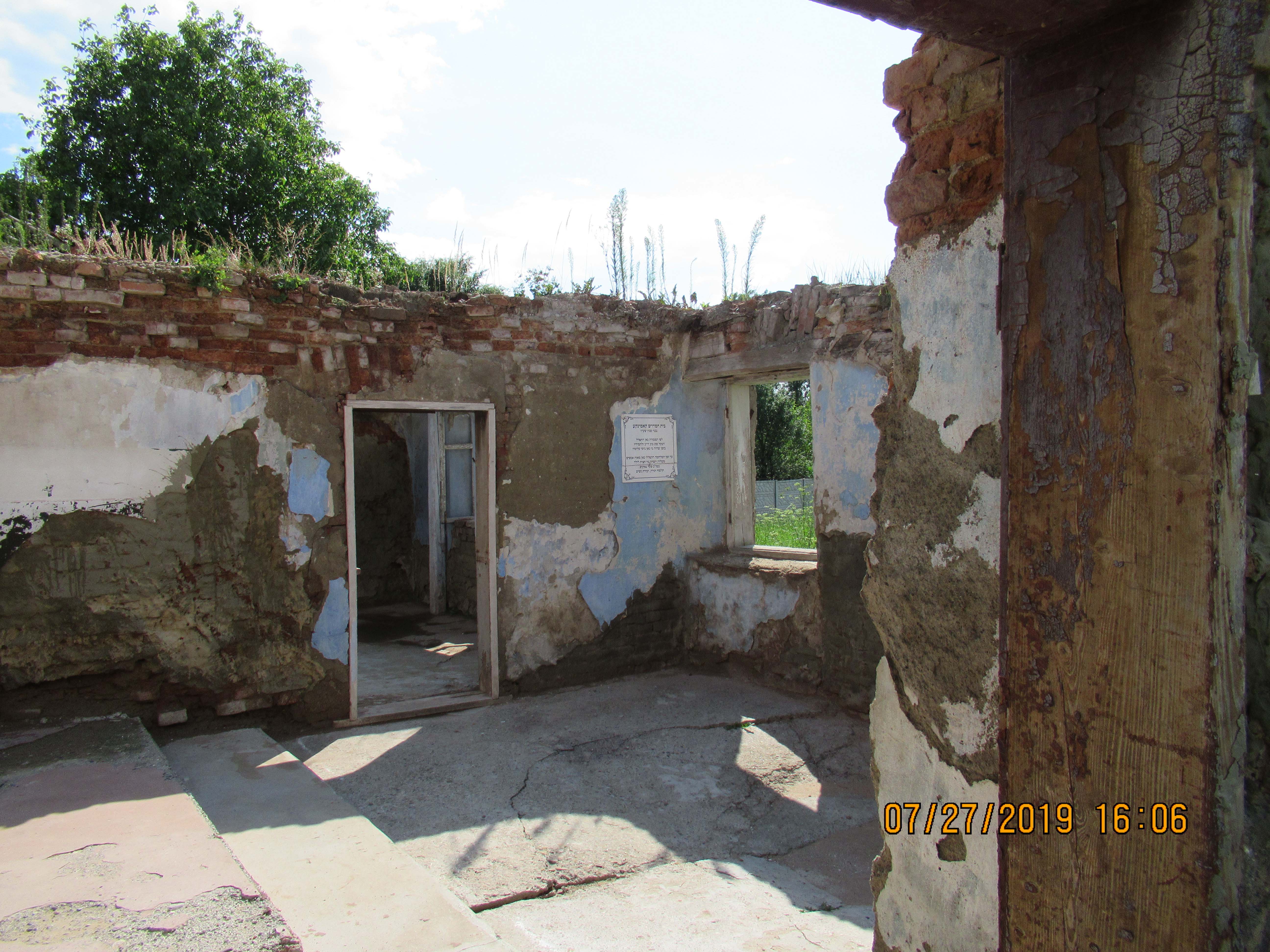 |
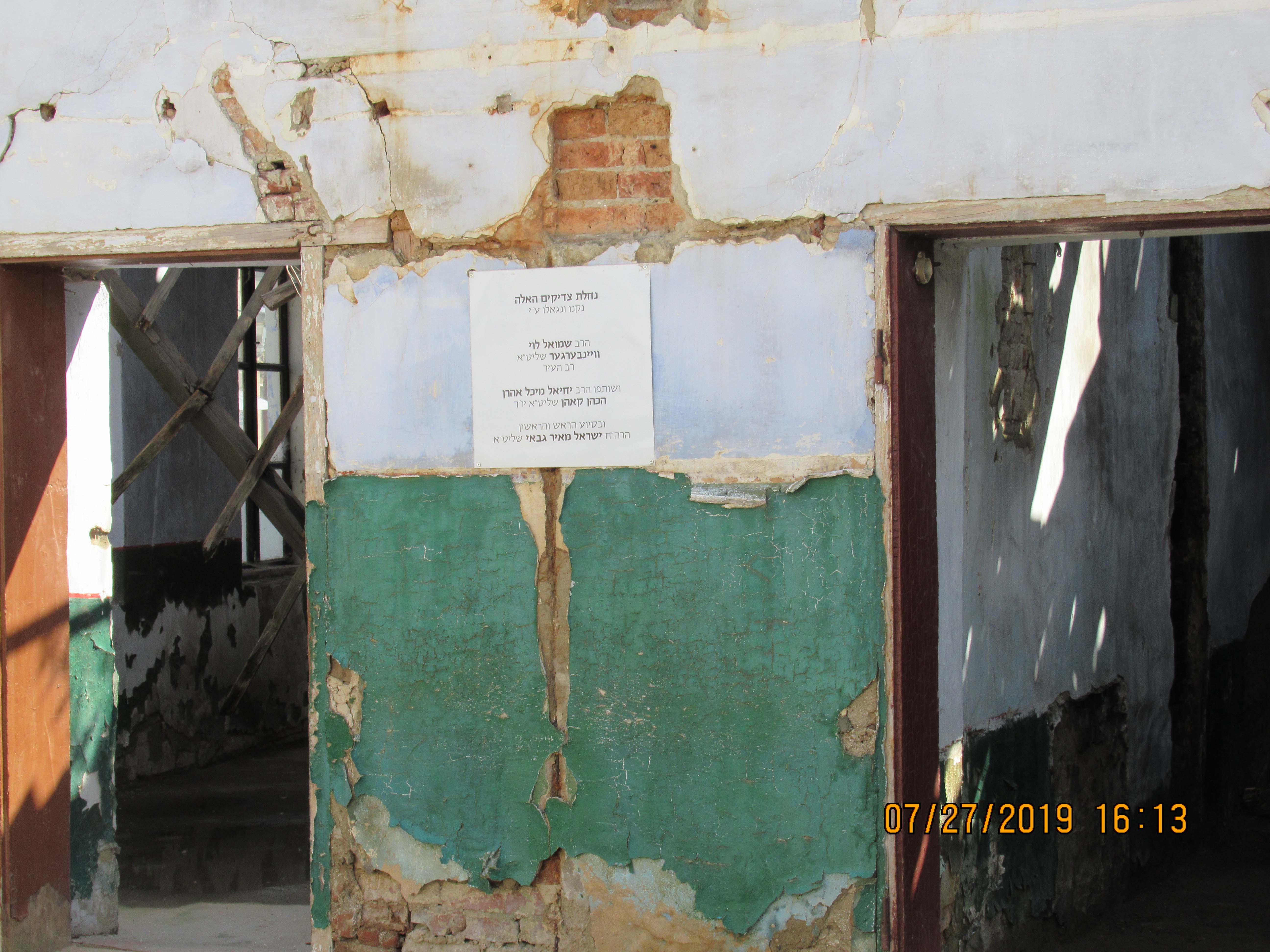 |
| Another room looking out toward
the cemetery |
Another room |
| Jeff and Yasha at the
gate to the cemetery. Sign on left : "Association Oholei Tzadikim – Gidrei Avos under the leadership of Rabbi Yisroel Mayer Gabai. Sign on right: “The very old cemetery of the city of Kolomyia from the years 5366 till 5547. Called the Akop–Kominke cemetery.” Years correspond to 1606 to 1786 |
Site of 1st Jewish
cemetery |
Previous Story Continued on next page
